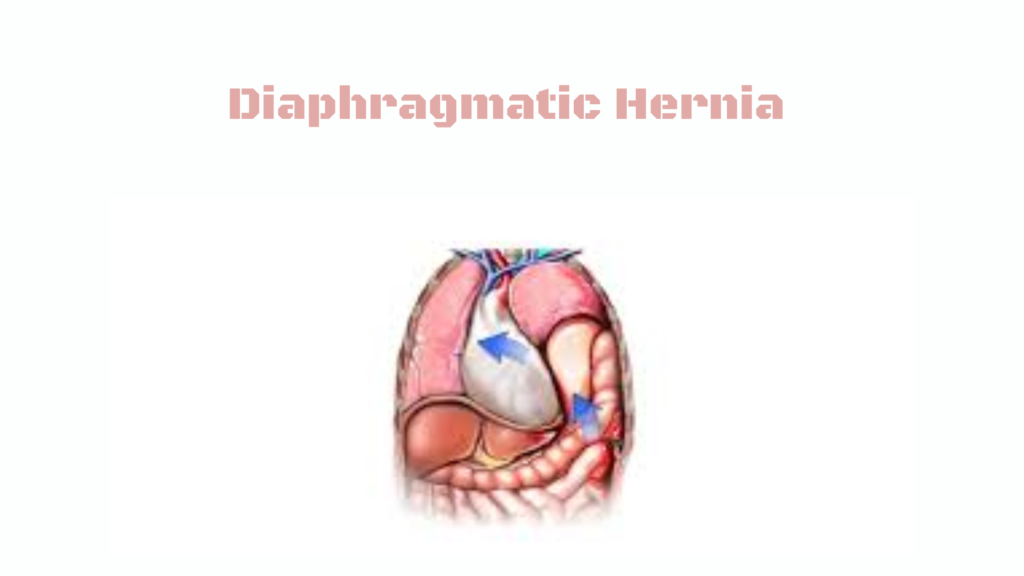A diaphragmatic hernia is a condition where abdominal organs move into the chest cavity through an abnormal opening in the diaphragm—the muscle that separates the chest from the abdomen. This displacement can impair lung development or function, and can be either congenital (present at birth) or acquired.
🧬 Types of Diaphragmatic Hernia
1. Congenital Diaphragmatic Hernia (CDH)
- Most common and serious form in newborns
- Occurs during fetal development
- Can be diagnosed prenatally or at birth
🔹 Subtypes:
| Type | Description | Common Side |
|---|---|---|
| Bochdalek hernia | Posterolateral defect (most common) | Left side (80–90%) |
| Morgagni hernia | Anterior defect (less common) | Right side |
| Central hernia | Very rare | Either side |
2. Acquired Diaphragmatic Hernia
- Caused by trauma, such as blunt injury (car accident), penetrating wounds, or surgery
- Can occur later in life
- May develop slowly or suddenly, depending on severity
⚠️ Symptoms
In Newborns (CDH):
- Severe respiratory distress at birth
- Cyanosis (blue skin/lips)
- Scaphoid abdomen (sunken belly)
- Asymmetrical chest expansion
- Diminished breath sounds on affected side
In Children or Adults (Acquired or Mild CDH):
- Chest or abdominal pain
- Shortness of breath
- Bowel sounds in the chest
- Nausea or vomiting
- Reflux symptoms
- Rarely, bowel obstruction or strangulation
🧪 Diagnosis
🧒 In Infants:
- Prenatal ultrasound: can detect CDH in utero (as early as 18–20 weeks)
- Fetal MRI: assesses lung volume and severity
- Chest X-ray after birth: shows bowel loops in the chest, mediastinal shift
🧑 In Older Children/Adults:
- Chest X-ray or abdominal X-ray
- CT scan or MRI for detailed anatomy
- Upper GI series if gastroesophageal involvement suspected
💊 Treatment
🩺 In Newborns (CDH):
- NICU care immediately after birth
- Intubation and mechanical ventilation
- Avoid bag-mask ventilation (can inflate bowel and worsen breathing)
- Surgery after stabilization (within days): hernia repair and organ repositioning
- ECMO (Extracorporeal Membrane Oxygenation): may be used in severe cases
🧑 In Children/Adults:
- Surgical repair via laparotomy or thoracoscopy
- Emergency surgery if bowel is strangulated or perforated
📊 Prognosis
- Depends on size of defect and lung development (in CDH)
- Left-sided defects are more common but generally better tolerated
- Mortality rates for severe CDH can be high without timely intervention
- Long-term issues may include:
- Chronic lung disease
- Gastroesophageal reflux
- Growth delays
